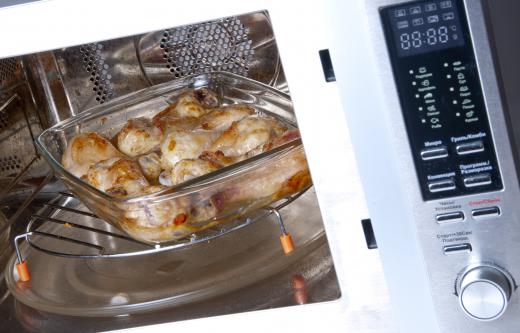What is a Convection Model?
 Dee Saale
Dee Saale
In everyday activities, it is possible to witness a convection model or an example of convection. Convection is one of the main ways by which heat is transferred from one object to another. It occurs when something, such as water or air, is heated. Some of it becomes less dense, causing the heated part to rise.
The best convection model is a pot of water. As the pot of water is heating up, the water expands and becomes less dense. Since that heated water is less dense, it rises to the top. This creates a current in the pot, as the water boils. The current can be witnessed if some noodles or another lightweight object is placed into the pot. The object will circulate through the pot as the heat transfers.

A convection model does not necessarily need to involve water. Air and other media may also indicate convection. For example, take a look in the sky. There may be birds gliding on columns of hot rising air, called thermals. The birds may appear to be circling and rising higher and higher into the sky. They are relying on the convective motion of the air as it becomes heated near the ground.

Another convection model is a modern oven. Many home owners have opted for a convection oven. With a convection oven, the air inside the oven gets hot, similar to an ordinary oven. The difference is that the air inside the convection oven circulates. Because the air circulates, the item in the oven cooks quicker and in a more even fashion than a non-convection oven.
People may use the term “heat rises” when discussing a variety of events; this term relates directly to convection. Because hot air becomes less dense and expands compared to the cooler air around it, it tends to rise upwards. Another convection model can be examined when looking at a multi-story home with an open staircase or a second-story loft that overlooks a room below. In those cases, the hot air remains on the second floor during the winter months; however, to increase circulation, some home owners will use a ceiling fan. Their goal is to push the warm air back down to the first floor, so that they can be warm both upstairs and downstairs.
Each convection model serves the purpose of helping people visualize the concept of convection. In a more general sense, if the convection term, “heat rises,” is kept in mind, people will remember to stay low, even when escaping a fire in their home or business. Thus, understanding convection can save lives.
AS FEATURED ON:
AS FEATURED ON:












Discuss this Article
Post your comments